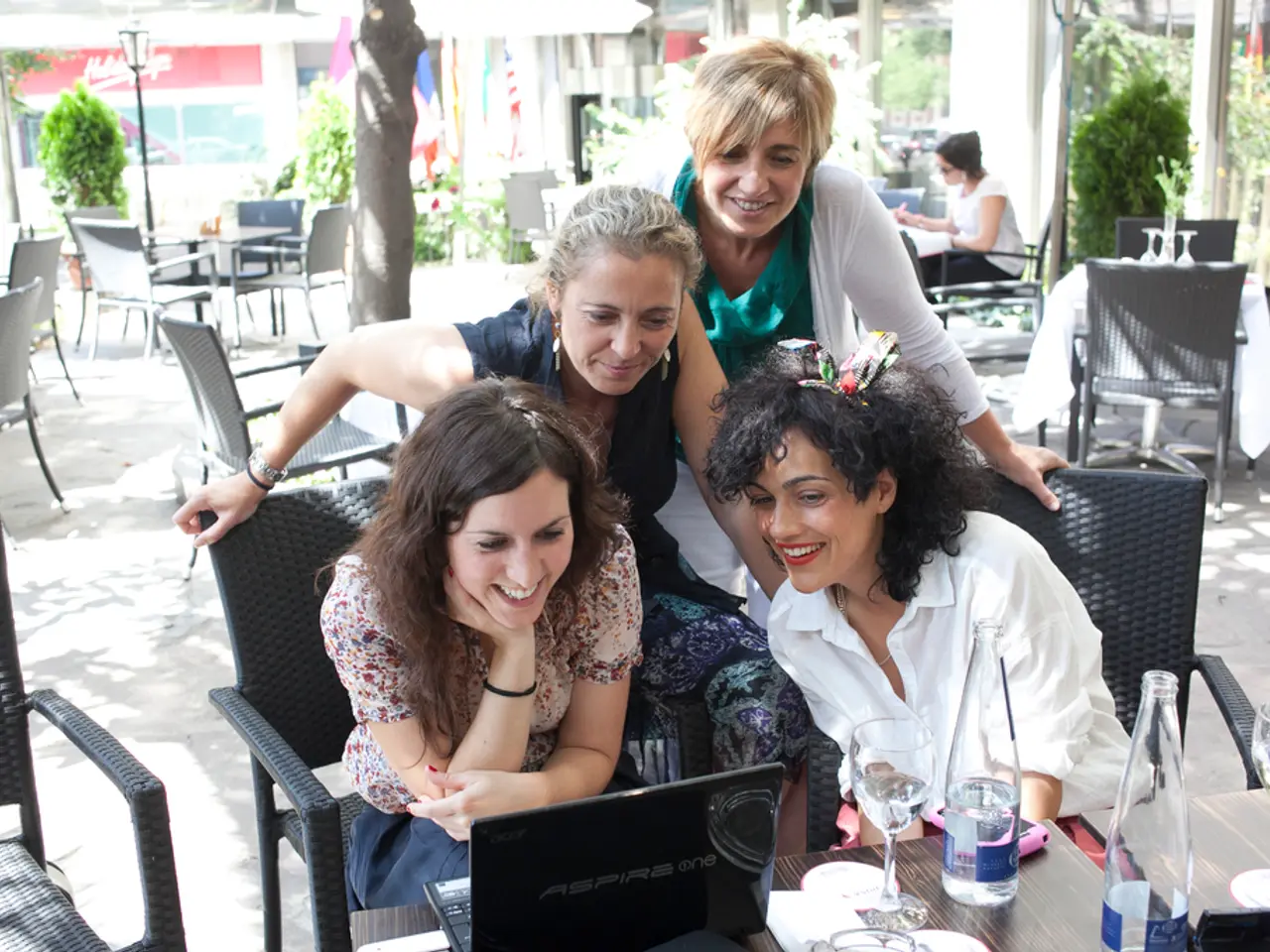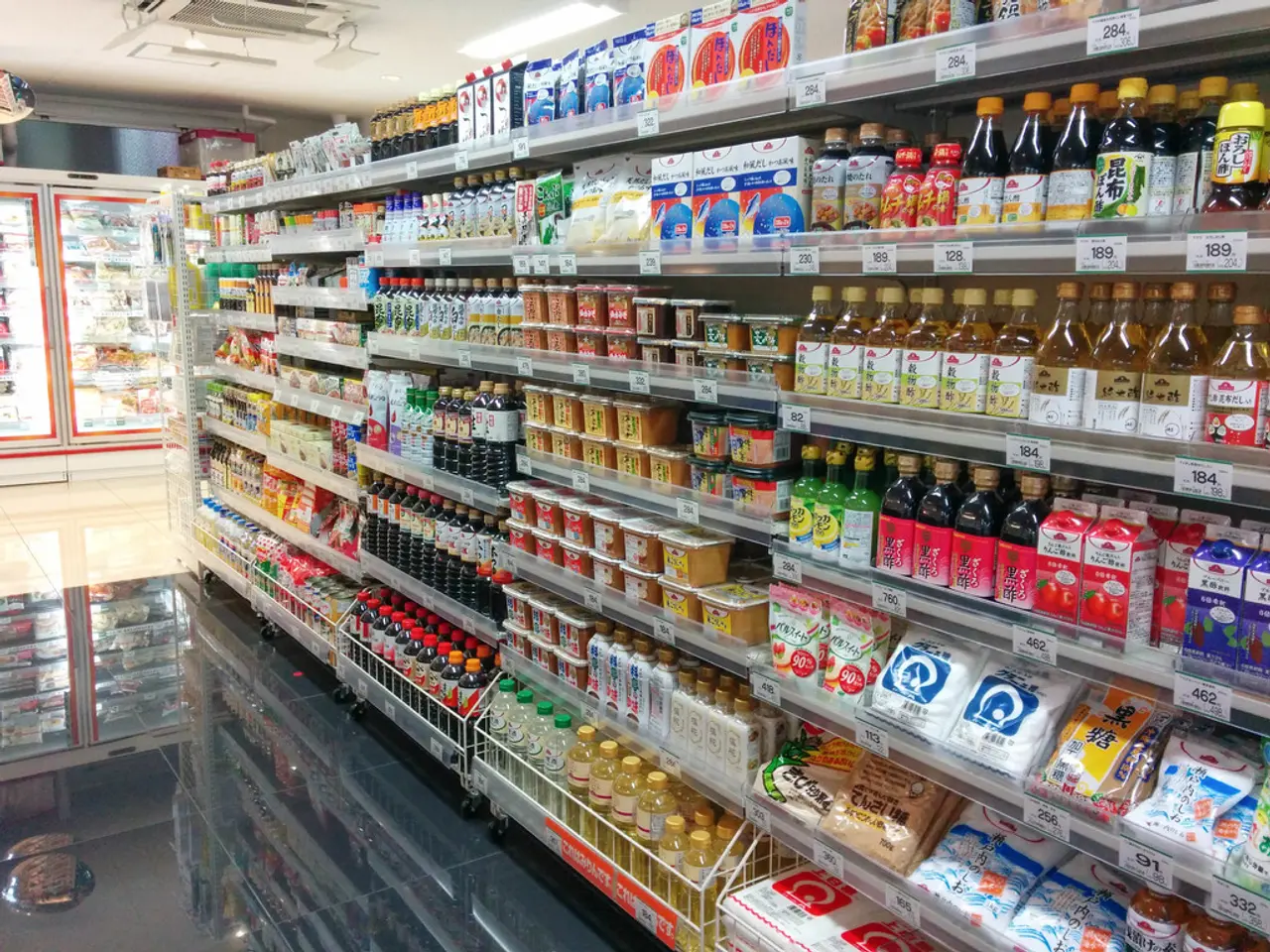Editor's Correspondence from August 4, 2025
In a significant stride towards financial inclusivity, the Pradhan Mantri Jan Dhan Yojana (PMJDY) has made a substantial impact in rural and semi-urban India. Over 66% of the 55+ crore accounts opened under PMJDY are in these areas, with a majority of account holders being women [1]. The scheme has enabled banking services within a 5-km radius for 99.95% of inhabited villages [1].
However, despite this success, challenges persist. Approximately 29% of Jan Dhan accounts remained inactive as of 2023, often serving only as conduits for government benefits rather than active financial tools [2]. Structural issues like dormant accounts, digital exclusion, and cyber security continue to limit full empowerment [2].
To address these challenges, strategies such as a nationwide re-KYC (Know Your Customer) campaign, emphasis on financial literacy, and integrated insurance-pension services are being implemented [3][4][5]. The re-KYC campaign aims to update account holders' details, reactivate dormant accounts, and bring services closer to rural users [3][4].
Moreover, the re-KYC camps also focus on enrolling beneficiaries in micro-insurance and pension schemes and addressing customer grievances, broadening the scope of financial services beyond banking transactions [3][4]. Emphasis is also being placed on financial literacy and tailored digital financial services, particularly via UPI and other cost-effective digital payment modes, to convert account holders into active users [5].
In summary, PMJDY has drastically expanded rural and semi-urban financial coverage but faces challenges in account activation and meaningful usage. The current focus on re-KYC, financial literacy, and integrated insurance-pension services seeks to address these gaps and transition towards greater financial empowerment and inclusion [1][2][3][4][5].
Meanwhile, the US government has imposed punitive tariffs affecting various sectors, including the unorganized textile sector. Exporters are seeking relief in the form of a hike in duty-drawback and cash compensatory support. The US-India trade talks are uncertain, posing challenges for exporters.
The net domestic product at factor cost, rather than GDP at market prices, is a better indicator of the nation's performance. The National Statistical Office is considering using GST and UPI data for calculating GDP. It is crucial to ensure no productive activity is left out in the calculation of GDP. The income method is considered the best way of calculating GDP due to the numerous productive activities.
The government is considering reintroducing income tax exemption under Section 80HHC for a few more years. However, the global export quota system under MFI was abolished, leading to the phasing out of income tax exemption under Section 80HHC.
Lastly, a servant maid's income is considered factor income because it is productive work. To achieve holistic financial inclusion, the state should focus on augmenting digital outreach, deploying vernacular fintech interfaces, and leveraging decentralized governance mechanisms.
[1] Reserve Bank of India. (2023). Trend and Progress of Banking in India. [2] Financial Inclusion Network & Consulting (FINC). (2023). Financial Inclusion in India: Challenges and Opportunities. [3] Government of India. (2025). Re-KYC Campaign for PMJDY Account Holders. [4] Ministry of Electronics and Information Technology. (2025). Digital India: Enhancing Financial Services in Rural India. [5] World Bank. (2023). Financial Inclusion in India: A Gender Perspective.
- To achieve holistic financial inclusion, the state should focus on augmenting digital outreach, deploying vernacular fintech interfaces, and leveraging decentralized governance mechanisms, similar to the approach taken with the Pradhan Mantri Jan Dhan Yojana (PMJDY).
- The US-India trade talks are uncertain, posing challenges for exporters seeking relief in the form of a hike in duty-drawback and cash compensatory support, much like the challenges faced by unorganized textile sector exporters due to punitive tariffs.
- The re-KYC campaign for PMJDY account holders, emphasizing financial literacy, integrated insurance-pension services, and updating account holders' details, is being implemented to address the challenges of dormant accounts and low usage [3].
- In the realm of business and finance, the net domestic product at factor cost is considered a better indicator of the nation's performance, as it provides a more accurate representation of productive activities than GDP at market prices [unspecified source].
- The government is considering reintroducing income tax exemption under Section 80HHC for a few more years, but the global export quota system under MFI, which led to the phasing out of income tax exemption under Section 80HHC, has been abolished [unspecified source].




